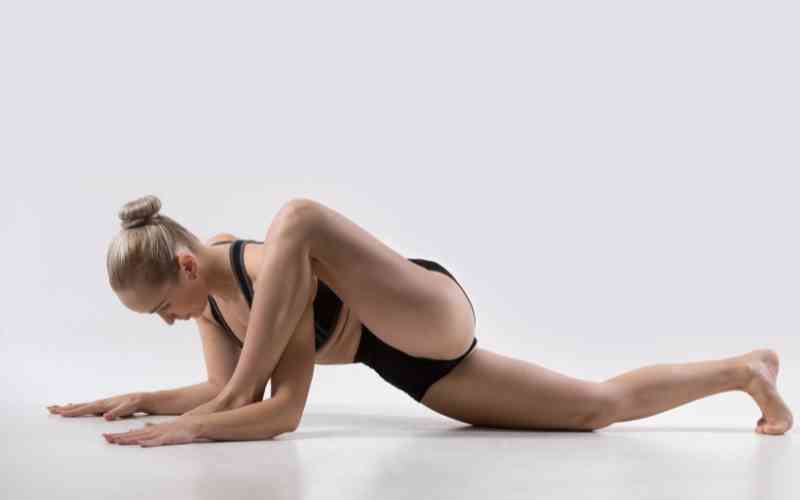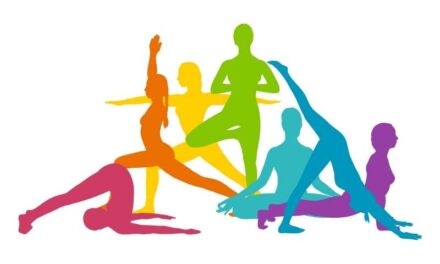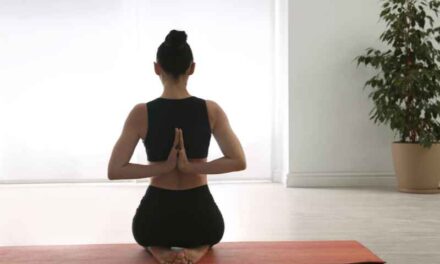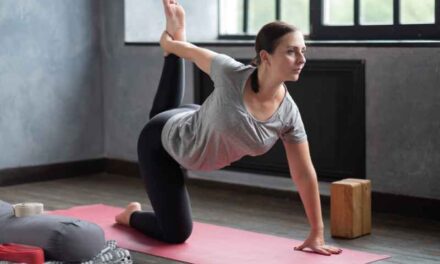Pristhasana, also known as the lizard pose, is a deep hip opener that can help release tension and tightness in the hips, groin, and hamstrings. It is a yoga posture that requires strength, flexibility, and balance, making it a great pose for intermediate and advanced practitioners. In this blog post, we will take a closer look at Pristhasana and explore its benefits, steps, and variations.
Benefits of Pristhasana:
- Improves flexibility: Pristhasana stretches the hips, groin, and hamstrings, promoting greater flexibility and mobility in these areas. This pose can also help alleviate lower back pain, stiffness, and discomfort.
- Tones and strengthens the legs: The lizard pose engages the leg muscles, including the quadriceps, hamstrings, and glutes. Practicing this pose regularly can help tone and strengthen these muscles.
- Enhances balance: Pristhasana requires a strong sense of balance and stability. By practicing this pose, you can improve your proprioception and develop greater balance and coordination.
- Stimulates digestion: The lizard pose is a great posture for stimulating the digestive system. The deep hip opening can help increase blood flow to the abdominal organs, promoting healthy digestion and elimination.
Steps to Practice Pristhasana:
To begin practicing Pristhasana, follow these steps:
- Start in a low lunge position with your right foot forward and your left knee on the ground. Your right knee should be directly above your ankle, and your right thigh should be parallel to the ground.
- Slowly lower your forearms to the ground, keeping your right knee bent at a 90-degree angle.
- Begin to walk your right foot toward the edge of your mat, allowing your right knee to move out to the side.
- Keep your left leg extended behind you with your toes tucked under, and your hips squared towards the front of your mat.
- Lower your forearms to the ground, pressing your right elbow into your right knee to deepen the stretch.
- Hold this pose for 5-10 breaths, then release and switch sides.
Tips for Practicing Pristhasana:
- If you have knee problems, you may want to place a blanket or a cushion under your back knee for support.
- Be mindful of your alignment and keep your hips squared towards the front of your mat.
- If you find it difficult to reach the ground with your forearms, you can use yoga blocks or a bolster to support your upper body.
- Always listen to your body and never force yourself into a pose. If you experience pain or discomfort, back off and modify the pose as needed.
Variations of Pristhasana:
- Twisted Lizard Pose: To deepen the stretch and increase the twist, place your right hand on the ground inside your right foot and reach your left arm towards the ceiling. Hold for 5-10 breaths, then release and switch sides.
- Half Hanuman Pose: From a low lunge position, straighten your front leg and flex your toes towards your face. Fold forward over your right leg and hold for 5-10 breaths.
- Modified Lizard Pose: If you have tight hips or limited flexibility, you can modify the pose by placing your forearms on a block or a bolster instead of the ground.
In conclusion, Pristhasana is a powerful hip opener that can help release tension, improve flexibility, and enhance balance. With consistent practice and proper alignment, you can experience the many benefits of this pose and deepen your yoga practice. As always, remember to listen to your body, honor your limits, and never force yourself into a pose. Enjoy your practice and have fun exploring the variations of Pristhasana to find what works best for you and your body.
Additionally, Pristhasana can also be a great preparatory pose for deeper hip openers like Eka Pada Rajakapotasana (Pigeon Pose) and Hanumanasana (Monkey Pose). By practicing this pose regularly, you can build strength and flexibility in your hips and prepare your body for more advanced postures.
It’s important to note that Pristhasana may not be suitable for everyone, especially those with hip or knee injuries. If you have any concerns or limitations, it’s always best to consult with a qualified yoga instructor or healthcare professional before attempting this or any other yoga pose.
In summary, Pristhasana is a beneficial yoga posture that can help you release tension and tightness in your hips, strengthen your legs, enhance your balance and coordination, and stimulate digestion. By practicing this pose regularly and mindfully, you can deepen your yoga practice and experience greater physical, mental, and emotional well-being. So, roll out your mat, take a deep breath, and give Pristhasana a try!





